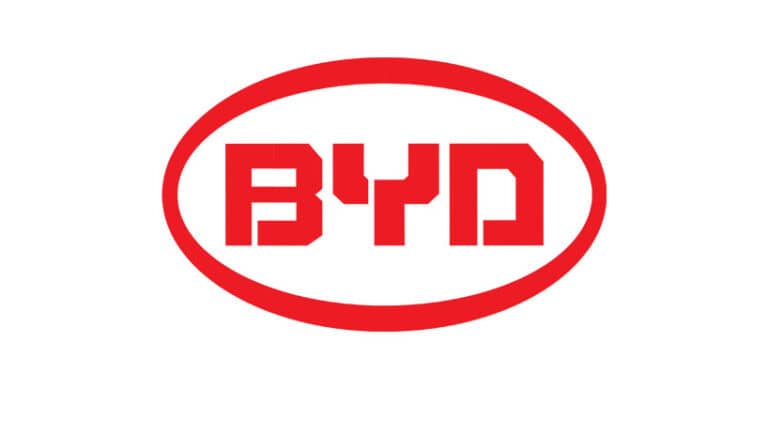Preparing for a machine learning (ML) interview at a top-tier company like Microsoft can feel like gearing up for a marathon. It’s not just about knowing the basics; it’s about demonstrating a deep understanding of ML concepts, problem-solving skills, and the ability to apply theoretical knowledge to real-world scenarios. At InterviewNode, we’re here to help you cross the finish line with confidence.
In this blog, we’ll break down the top 25 frequently asked questions in Microsoft ML interviews, complete with detailed answers, practical examples, and tips to help you stand out. Whether you’re a seasoned data scientist or a software engineer transitioning into ML, this guide will equip you with the knowledge and confidence to ace your interview.
Let’s get started!
Understanding Microsoft’s ML Interview Process
Before diving into the questions, it’s important to understand what Microsoft looks for in ML candidates. Microsoft’s interview process typically includes:
Technical Screening: A phone or video interview focusing on coding, algorithms, and basic ML concepts.
Onsite Interviews: Multiple rounds covering coding, system design, ML theory, and behavioral questions.
Practical Assessments: You may be asked to solve real-world ML problems or work on a case study.
Behavioral Interviews: Questions about your past experiences, teamwork, and problem-solving approach.
Microsoft values candidates who can think critically, communicate effectively, and apply ML concepts to solve complex problems. Now, let’s dive into the top 25 questions you’re likely to encounter.
Top 25 Frequently Asked Questions in Microsoft ML Interviews
Section 1: Foundational ML Concepts
1. What is the difference between supervised and unsupervised learning?
Answer:Supervised and unsupervised learning are two core paradigms in machine learning, and understanding their differences is crucial.
Supervised Learning:In supervised learning, the model is trained on labeled data, meaning the input data is paired with the correct output. The goal is to learn a mapping from inputs to outputs. For example, predicting house prices based on features like size, location, and number of bedrooms is a supervised learning task. Common algorithms include linear regression, logistic regression, and support vector machines.
Unsupervised Learning:In unsupervised learning, the model is trained on unlabeled data, and the goal is to find hidden patterns or structures in the data. Clustering and dimensionality reduction are common unsupervised learning tasks. For example, grouping customers based on purchasing behavior (clustering) or reducing the number of features in a dataset (dimensionality reduction) are unsupervised tasks. Common algorithms include k-means clustering and principal component analysis (PCA).
Why Microsoft Asks This:This question tests your understanding of the fundamental concepts that underpin machine learning. It’s essential to know when to use each approach and how they differ in terms of data requirements and applications.
2. Explain the bias-variance tradeoff.
Answer:The bias-variance tradeoff is a fundamental concept in machine learning that describes the tradeoff between two sources of error in predictive models.
Bias:Bias refers to errors due to overly simplistic assumptions in the learning algorithm. High bias can cause an algorithm to miss relevant relations between features and target outputs (underfitting).
Variance:Variance refers to errors due to the model’s sensitivity to small fluctuations in the training set. High variance can cause overfitting, where the model captures noise instead of the underlying pattern.
Tradeoff:A model with high bias pays little attention to the training data and oversimplifies the problem, while a model with high variance pays too much attention to the training data and fails to generalize to new data. The goal is to find the right balance between bias and variance to minimize total error.
Example:Imagine fitting a polynomial curve to data points. A straight line (high bias) might underfit the data, while a high-degree polynomial (high variance) might overfit it. The optimal model lies somewhere in between.
Why Microsoft Asks This:Understanding the bias-variance tradeoff is critical for building models that generalize well to new data. It also demonstrates your ability to diagnose and address underfitting and overfitting.
3. What is overfitting, and how can you prevent it?
Answer:Overfitting occurs when a model learns the training data too well, capturing noise and outliers instead of the underlying pattern. As a result, the model performs poorly on unseen data.
How to Prevent Overfitting:
Cross-Validation: Use techniques like k-fold cross-validation to evaluate the model’s performance on multiple subsets of the data.
Regularization: Add a penalty term to the loss function to discourage complex models (e.g., L1 or L2 regularization).
Simplify the Model: Reduce the number of features or use a simpler algorithm.
Early Stopping: Stop training when the validation error starts to increase.
Data Augmentation: Increase the size of the training dataset by adding variations of the existing data.
Why Microsoft Asks This:Overfitting is a common challenge in ML, and interviewers want to see that you understand how to address it effectively.
4. Describe the working of a decision tree.
Answer:A decision tree is a tree-like model used for classification and regression tasks. It splits the data into subsets based on feature values, creating a hierarchy of decisions.
How It Works:
Root Node: The topmost node representing the entire dataset.
Splitting: The dataset is split into subsets based on a feature that maximizes information gain or minimizes impurity (e.g., Gini impurity or entropy).
Leaf Nodes: Terminal nodes that represent the final output (class label or continuous value).
Example:Suppose you’re predicting whether a customer will buy a product based on age and income. The tree might first split on age (e.g., <30 or ≥30) and then on income (e.g., <50kor≥50kor≥50k).
Why Microsoft Asks This:Decision trees are a fundamental algorithm, and understanding their working is essential for building more complex models like random forests.
5. What is cross-validation, and why is it important?
Answer:Cross-validation is a technique for evaluating the performance of a machine learning model by splitting the data into multiple subsets and training/testing the model on different combinations of these subsets.
Common Types:
k-Fold Cross-Validation: The data is divided into k subsets, and the model is trained on k-1 subsets while testing on the remaining subset. This process is repeated k times.
Leave-One-Out Cross-Validation: A special case of k-fold where k equals the number of data points.
Why It’s Important:
Provides a more accurate estimate of model performance.
Helps detect overfitting by evaluating the model on multiple subsets of the data.
Why Microsoft Asks This:Cross-validation is a key technique for model evaluation, and interviewers want to ensure you understand its importance and implementation.
Section 2: Advanced ML Algorithms
6. How does a Random Forest work?
Answer:A random forest is an ensemble learning method that combines multiple decision trees to improve predictive accuracy and reduce overfitting.
How It Works:
Bootstrap Sampling: Random subsets of the training data are selected with replacement.
Feature Randomness: At each split in the tree, a random subset of features is considered.
Voting/Averaging: For classification, the majority vote of all trees is taken. For regression, the average prediction is used.
Advantages:
Reduces overfitting compared to individual decision trees.
Handles high-dimensional data well.
Why Microsoft Asks This:Random forests are widely used in industry, and understanding their working is essential for ML roles.
7. Explain the concept of gradient descent.
Answer:Gradient descent is an optimization algorithm used to minimize the loss function in machine learning models.
How It Works:
Initialize Parameters: Start with random values for the model’s parameters.
Compute Gradient: Calculate the gradient (partial derivatives) of the loss function with respect to each parameter.
Update Parameters: Adjust the parameters in the opposite direction of the gradient to minimize the loss.
Repeat: Iterate until convergence or a stopping criterion is met.
Types:
Batch Gradient Descent: Uses the entire dataset to compute the gradient.
Stochastic Gradient Descent (SGD): Uses a single data point to compute the gradient.
Mini-Batch Gradient Descent: Uses a small subset of the data.
Why Microsoft Asks This:Gradient descent is the backbone of many ML algorithms, and interviewers want to ensure you understand its mechanics.
8. What is the difference between bagging and boosting?
Answer:Bagging and boosting are ensemble techniques that combine multiple models to improve performance.
Bagging:
Trains multiple models independently on random subsets of the data.
Combines predictions through averaging or voting.
Example: Random forests.
Boosting:
Trains models sequentially, with each model correcting the errors of the previous one.
Assigns higher weights to misclassified instances.
Example: AdaBoost, Gradient Boosting Machines (GBM).
Why Microsoft Asks This:Understanding the differences between these techniques is crucial for selecting the right approach for a given problem.
9. Describe the working of a Support Vector Machine (SVM).
Answer:An SVM is a supervised learning algorithm used for classification and regression tasks. It works by finding the hyperplane that best separates the data into classes.
Key Concepts:
Hyperplane: A decision boundary that separates the data.
Support Vectors: Data points closest to the hyperplane that influence its position.
Margin: The distance between the hyperplane and the nearest data points.
Why Microsoft Asks This:SVMs are powerful algorithms, and understanding their working is essential for ML roles.
10. How does the k-means clustering algorithm work?
Answer:k-means is an unsupervised learning algorithm used for clustering data into k groups.
Steps:
Initialize Centroids: Randomly select k data points as initial centroids.
Assign Points: Assign each data point to the nearest centroid.
Update Centroids: Recalculate the centroids as the mean of all points in the cluster.
Repeat: Iterate until convergence.
Why Microsoft Asks This:Clustering is a common task in ML, and k-means is a fundamental algorithm.
Section 3: Deep Learning and Neural Networks
11. What is backpropagation, and how does it work?
Answer:Backpropagation is an algorithm used to train neural networks by minimizing the loss function.
Steps:
Forward Pass: Compute the output of the network.
Compute Loss: Calculate the difference between the predicted and actual output.
Backward Pass: Compute gradients of the loss with respect to each parameter using the chain rule.
Update Parameters: Adjust the parameters using gradient descent.
Why Microsoft Asks This:Backpropagation is the foundation of training neural networks, and understanding it is essential for deep learning roles.
12. Explain the concept of convolutional neural networks (CNNs).
Answer:CNNs are a type of neural network designed for processing grid-like data, such as images.
Key Components:
Convolutional Layers: Apply filters to extract features.
Pooling Layers: Reduce the spatial dimensions of the data.
Fully Connected Layers: Combine features for final prediction.
Why Microsoft Asks This:CNNs are widely used in computer vision, and understanding their architecture is crucial for ML roles.
13. What are recurrent neural networks (RNNs), and how do they differ from CNNs?
Answer:RNNs are designed for sequential data, such as time series or text.
Key Features:
Memory: RNNs maintain a hidden state that captures information from previous time steps.
Sequential Processing: Process one time step at a time.
Difference from CNNs:CNNs are used for spatial data, while RNNs are used for sequential data.
Why Microsoft Asks This:RNNs are essential for tasks like natural language processing, and understanding their differences from CNNs is important.
14. Describe the vanishing gradient problem and how to address it.
Answer:The vanishing gradient problem occurs when gradients become very small during backpropagation, causing the network to learn slowly or not at all.
Solutions:
Use activation functions like ReLU.
Use techniques like gradient clipping or batch normalization.
Why Microsoft Asks This:The vanishing gradient problem is a common challenge in deep learning, and interviewers want to see that you understand how to address it.
15. What is transfer learning, and when would you use it?
Answer:Transfer learning involves using a pre-trained model as a starting point for a new task.
When to Use:
When you have limited data for the new task.
When the new task is similar to the task the model was originally trained on.
Why Microsoft Asks This:Transfer learning is a powerful technique, and understanding its applications is important for ML roles.
Section 4: Practical Applications and Problem-Solving
16. How would you handle missing data in a dataset?
Answer:Handling missing data is a critical step in data preprocessing.
Approaches:
Remove Missing Data: Drop rows or columns with missing values.
Imputation: Fill missing values with the mean, median, or mode.
Predictive Modeling: Use algorithms like k-nearest neighbors (KNN) to predict missing values.
Why Microsoft Asks This:Handling missing data is a common challenge, and interviewers want to see that you understand the tradeoffs of different approaches.
17. Describe a time when you had to optimize a machine learning model.
Answer:This is a behavioral question that tests your problem-solving skills.
Example:"I worked on a project where the model’s accuracy was low. I performed hyperparameter tuning using grid search and improved the model’s performance by 10%."
Why Microsoft Asks This:Optimizing models is a key part of an ML engineer’s job, and interviewers want to see that you have hands-on experience.
18. How do you evaluate the performance of a machine learning model?
Answer:Model evaluation depends on the type of problem.
For Classification:
Accuracy, precision, recall, F1 score, ROC-AUC.
For Regression:
Mean squared error (MSE), mean absolute error (MAE), R-squared.
Why Microsoft Asks This:Evaluating model performance is essential for ensuring the model meets business requirements.
19. What are some common data preprocessing techniques?
Answer:Data preprocessing is crucial for preparing data for modeling.
Techniques:
Normalization, standardization, encoding categorical variables, handling missing data.
Why Microsoft Asks This:Data preprocessing is a foundational step in ML, and interviewers want to see that you understand its importance.
20. How would you approach a classification problem with imbalanced data?
Answer:Imbalanced data is a common challenge in classification tasks.
Approaches:
Resampling (oversampling minority class or undersampling majority class).
Using algorithms like SMOTE.
Adjusting class weights in the model.
Why Microsoft Asks This:Handling imbalanced data is a key skill for ML engineers.
Section 5: System Design and Scalability
21. How would you design a recommendation system?
Answer:A recommendation system suggests items to users based on their preferences.
Approaches:
Collaborative filtering.
Content-based filtering.
Hybrid models.
Why Microsoft Asks This:Recommendation systems are widely used in industry, and understanding their design is important.
22. Describe how you would scale a machine learning model to handle large datasets.
Answer:Scaling ML models involves handling large volumes of data efficiently.
Approaches:
Distributed computing (e.g., Apache Spark).
Model parallelism.
Data parallelism.
Why Microsoft Asks This:Scalability is a key consideration for ML systems, and interviewers want to see that you understand how to address it.
23. What are some challenges you might face when deploying a machine learning model?
Answer:Deploying ML models involves several challenges.
Challenges:
Model drift.
Latency and performance.
Monitoring and maintenance.
Why Microsoft Asks This:Deployment is a critical phase in the ML lifecycle, and interviewers want to see that you understand the challenges involved.
24. How would you ensure the security and privacy of data in a machine learning system?
Answer:Data security and privacy are critical in ML systems.
Approaches:
Data encryption.
Access controls.
Differential privacy.
Why Microsoft Asks This:Security and privacy are key concerns for companies like Microsoft, and interviewers want to see that you understand how to address them.
25. What are some best practices for maintaining and updating machine learning models in production?
Answer:Maintaining ML models in production is essential for ensuring their continued performance.
Best Practices:
Regular monitoring.
Retraining models with new data.
Version control.
Why Microsoft Asks This:Maintaining models is a key responsibility for ML engineers, and interviewers want to see that you understand best practices.
Tips for Acing Microsoft ML Interviews
Master the Basics: Ensure you have a strong understanding of foundational ML concepts.
Practice Coding: Be comfortable with coding challenges and algorithms.
Think Aloud: Communicate your thought process clearly during problem-solving.
Prepare for Behavioral Questions: Be ready to discuss past experiences and challenges.
Stay Calm and Confident: Approach the interview with a positive mindset.
Conclusion
Preparing for a Microsoft ML interview can be challenging, but with the right resources and practice, you can succeed. At InterviewNode, we’re here to help you every step of the way. Sign up today to access our comprehensive interview preparation resources and take the first step toward landing your dream job.






